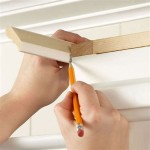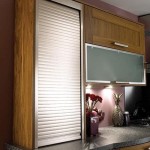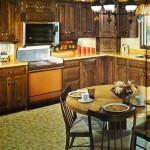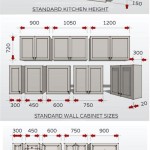What Type of Sandpaper to Use on Kitchen Cabinets
Sanding is a crucial step in refinishing kitchen cabinets. The type of sandpaper you use will significantly impact the quality of the finish, so it's essential to choose the right one. Here's a guide to help you select the best sandpaper for your kitchen cabinet project:
Grit Levels
Sandpaper grit refers to the coarseness or fineness of the abrasive particles. Lower grit numbers indicate coarser sandpaper, while higher grit numbers indicate finer sandpaper. For kitchen cabinets, you'll need a range of grit levels:
- 80-120 Grit: For removing old paint, varnish, or heavy scratches.
- 150-180 Grit: For smoothing the surface after coarse sanding.
- 220-240 Grit: For fine sanding before priming.
- 320-400 Grit: For sanding between coats of finish.
Start with the coarsest grit necessary and gradually work your way up to the finest grit for a smooth, professional finish.
Type of Abrasive
Sandpaper can be made with various abrasive materials, including:
- Aluminum Oxide: A durable and versatile abrasive suitable for most sanding tasks, including kitchen cabinets.
- Silicon Carbide: A sharp and fast-cutting abrasive, best suited for removing old finishes or sanding hardwoods.
- Garnet: A finer abrasive that produces a smooth finish, ideal for sanding softwoods like pine.
Backing Material
Sandpaper is available with different backing materials, such as:
- Paper: The most economical option, but less durable than other materials.
- Cloth: More durable than paper, conforms to irregular surfaces, and can be reused multiple times.
- Film: The most durable option, resistant to moisture and tears.
Sanding by Hand vs. Machine
You can sand kitchen cabinets by hand or using a sanding machine. Hand sanding is more labor-intensive but allows for more precise control. Sanding machines can speed up the process but require careful handling to avoid gouging the wood.
Tips for Sanding Kitchen Cabinets
- Always wear a dust mask and safety glasses when sanding.
- Use a sanding block to ensure even pressure and prevent gouging.
- Sand with the grain of the wood.
- Start with the coarsest grit necessary and gradually work your way up to the finest grit.
- Vacuum or wipe away dust after each sanding session.
Conclusion
Choosing the right sandpaper for kitchen cabinets is essential for a smooth, professional finish. Consider the grit level, type of abrasive, backing material, and sanding method to select the sandpaper that best suits your project. By following these tips, you can achieve beautiful, refinished kitchen cabinets that will last for years to come.

A Guide To Painting Kitchen Cabinets Norton Abrasives

The Best Paint For Cabinets 2 Cabinet Girls

A Guide To Painting Kitchen Cabinets Norton Abrasives
Refinishing Kitchen Cabinets A Beautiful Mess

Sanding Techniques For Cabinets Get The Perfect Finish Cabinet Doors N More

How To Paint Cabinets And Get Pro Results Without A Sprayer Hartley Home

How To Prep And Paint Kitchen Cabinets Lowe S

Refinish Kitchen Cabinets With Kilz Restoration Primer

How To Paint Kitchen Cabinets A Step By Guide Confessions Of Serial Do It Yourselfer

How To Paint Oak Cabinets And Hide The Grain Tutorial
Related Posts








